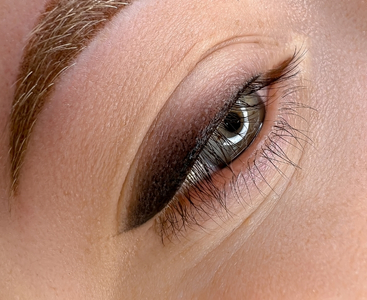MAXILLARY ADVANCEMENT
Maxillary Advancement
Maxillary advancement is an application that is among the orthognathic surgical procedures. orthognathia; It is a combination of the Greek words straight (ortho) and jaw (gnatia). It is a term describing the surgical procedures used in the correction of structural defects in the jaw bones. When the jaw structure grows more or less than normal during the developmental stage, incompatibility between the lower and upper jaw may occur. This situation both causes an aesthetically unappealing appearance and causes various functional problems. Asymmetry between the jawbones; It can cause breathing, eating and sleeping disorders.
What is the Maxilla?
The maxilla is the bone that occupies the largest space on the face after the lower jawbone. It contains a cavity called the maxillary sinus. It is an immobile bone. It is located in the middle of the face and has a very complex structure. In addition, our upper teeth are located on the maxilla.
If the maxilla is left behind in the developmental stage, it causes incompatibility with both the face and the lower jaw. As a result of this situation, vital functions such as eating, breathing and sleeping may not be performed comfortably because the jaws are not properly aligned with each other.
What is Orthognathic Surgery?
Orthognathic surgery is the surgery applied to eliminate the deformations and structural disorders in the skeletal structure of the face. Asymmetrical jaw bones can cause various problems. It is possible to eliminate this asymmetry with orthognathic surgery. Structural disorders resulting from developmental delays and excessive developmental anomalies are very common problems. In order to eliminate these problems, it is necessary to change the structure of the bones. In this case, the surgical procedures applied are within the scope of orthognathic surgery.
Orthognathic surgery, also called maxillofacial surgery, is a procedure performed on bones and soft tissues. Orthognathic surgery, which is a subject of specialization in plastic surgery, is performed by plastic surgeons who are experts in their field. At the same time, support from orthodontists is taken to align the teeth. Alignment problems are eliminated by reshaping both the jaw and tooth structure by plastic surgeons and orthodontists.
What is the Maxillary Advancement?
Maxilla advancement, which is one of the orthognathic surgical procedures, is also known as upper jaw surgery. Maxilla may be behind due to developmental disorders or past accidents. This may create a mismatch between the lower and upper jaws. The asymmetry between the lower and upper jaw can cause many problems for patients both visually and functionally.
Bite, also called occlusion; It requires the upper teeth and lower teeth to have the correct alignment and to be able to contact as they should. Anterior or posterior jaw bones cause bite disorders. Malocclusion, which means wrong bite, has an effect that can also change facial expression. While some malocclusions can only be corrected with orthodontic treatment, conditions such as lagging maxilla require orthognathic treatments.
What are the Symptoms of Back Upper Jaw?
If the upper jaw bone is behind, it causes the lower and upper jaws to be incompatible with each other. This causes some symptoms to occur in patients. Main symptoms and complaints:
- Inability to chew comfortably while eating
- problems with speech
- Dysfunction in chewing muscles
- Pain in the jaw joint and head
- Deformations in the tissues surrounding the teeth
- Aesthetic problems on the face
- Psychological problems
What Causes Retardation in the Upper Jaw?
Recession in the maxillary bone, which will require maxillary advancement therapy, may occur as a result of developmental disorders. This condition, called micrognathia, refers to the development of the upper jaw further back than the lower jaw. Developmental delay in the jawbone causes the problem of asymmetry between the jaws. At the same time, it is possible to develop jawbone deformities later on. Depending on the blows and trauma to this area, deterioration of the harmony of the jaw bones may occur.
How is Upper Jaw Recession Treated?
The compatibility problems between the jaws are eliminated with orthognathic surgical procedures. However, jaw surgeries are procedures that need to be planned in detail and comprehensively. Before surgery, both the lower and upper jaws of patients should be imaged. In this way, existing problems can be seen in detail. This process, which includes panoramic, cephalometric and jaw joint imaging, is also supported by jaw models. The jaw structure of the patient is examined in detail with the plaster models created after the measurement of the lower and upper jaws is taken.
Structural problems in the jaw bones require an interdisciplinary treatment. While orthognathic surgery procedures are performed by plastic surgeons who are experts in their fields, orthodontists should be consulted for correct alignment of the teeth.
How Is Maxilla Advancement Made?
In patients with maxillary recession, orthognathic surgery is applied to advance the maxillary bone. The surgery is performed under general anesthesia. This procedure, also called maxillary advancement surgery, is planned depending on the amount of advancement in the bone. In the case of the jaw structure that requires more than 10 millimeters of advancement, it is possible to resort to gradual advancement, also called distraction.
How Long Does Maxillary Advancement Surgery Take?
The duration of this surgery, in which the jawbone is intervened, may vary from patient to patient. In general, it is possible to say that the operation process is completed in 2.5-4 hours.










